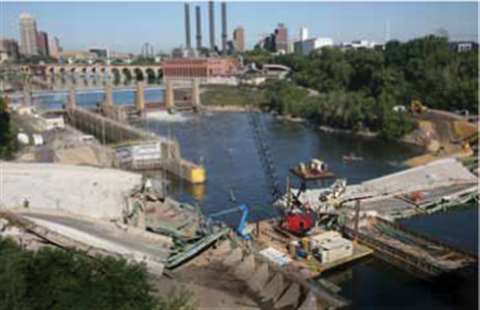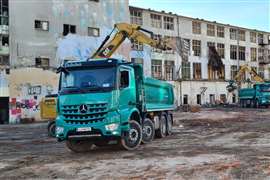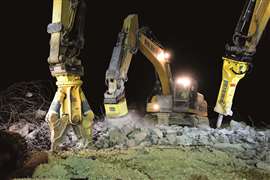Disaster recovery
10 April 2008

Just days after one of the worst bridge collapses in United States history, contractor Carl Bolander & Sons, based in St Pauls, Minnesota, was dispatched to the site to handle demolition and dismantling of the wrecked bridge.
Established in 1924, Carl Bolander & Sons specialises in self-performing earthwork, underground utilities, demolition, and earth retention systems. The company owns four cranes that it uses for demolition and rents additional cranes when needed. It also naturally owns a fleet of excavators and all the other equipment required for demolition projects.
For the Minneapolis bridge demolition project, removing the wreckage was a tedious and dangerous process, with an engineering team needed to determine how to rig, lift and load each piece of mangled concrete and steel. Evan Mackey, demolition division manager for Bolander and project manager for the job, says expert operators and engineers were needed to determine every lift.
The bridge had collapsed in an uncontrolled manner so there were different loads and stresses on everything,” he explains. “You have to know what you are doing and be selective in taking things apart. There were several engineers involved and the demolition was more or less the dismantling of each piece of the bridge.”
Bolander's scope of work was to dismantle the bridge from land abutment to land abutment, approximately 2,000 lineal feet (609 m) of bridge and 456 feet (139 m) across the Mississippi River itself. All materials were transported off site, with some pieces going to an evidence area established at the Bohemian Flats municipal park in Minneapolis and some pieces hauled to a site near Afton, Minnesota. According to Mr Mackey, some critical pieces were flown to Washington, DC. for further inspection as part of the ongoing effort to determine the cause of the collapse,
“It was a lot of lifting and hoisting work,” he says. “The cranes did most of the work.”
Equipment on the US$15 million (€10 million) contract included four 100-ton cranes and three excavators. Initially the company was involved in the recovery and removal of vehicles that were submerged when the bridge collapsed. The demolition and dismantling work began in late August.
Secured to a barge, Bolander employed its 418 Link-Belt, rigged with 110 ft (33.5 m) of boom. The company also rented a 550-ton capacity Grove all-terrain crane from Armstrong Crane & Rigging based in New Bridon, Minnesota. This crane worked from a causeway on the river. An additional crane owned by Armstrong worked at one of the sites where the mangled bridge material was delivered.
Frequently a supervisor would work from an access platform, giving instructions to the crane operators using a loudhailer.
By late August, Bolander had finished its work at the site and began doing pile driving work for Flatiron-Manson, general contractors awarded the contract to reconstruct the new bridge.
CONNECT WITH THE TEAM








